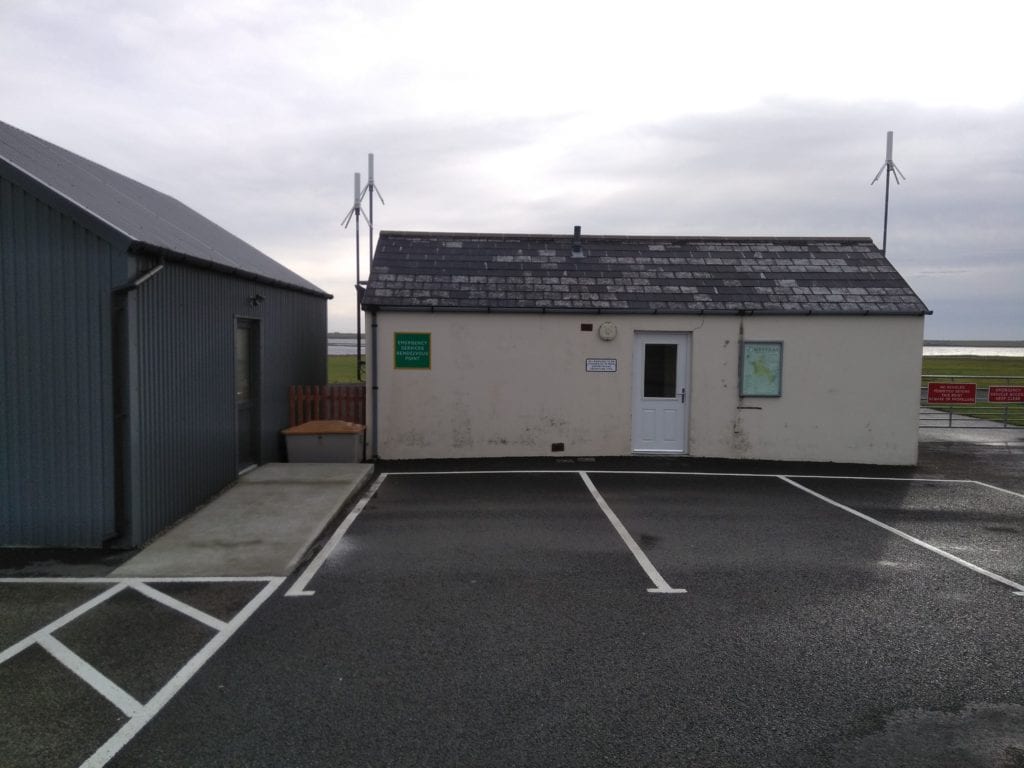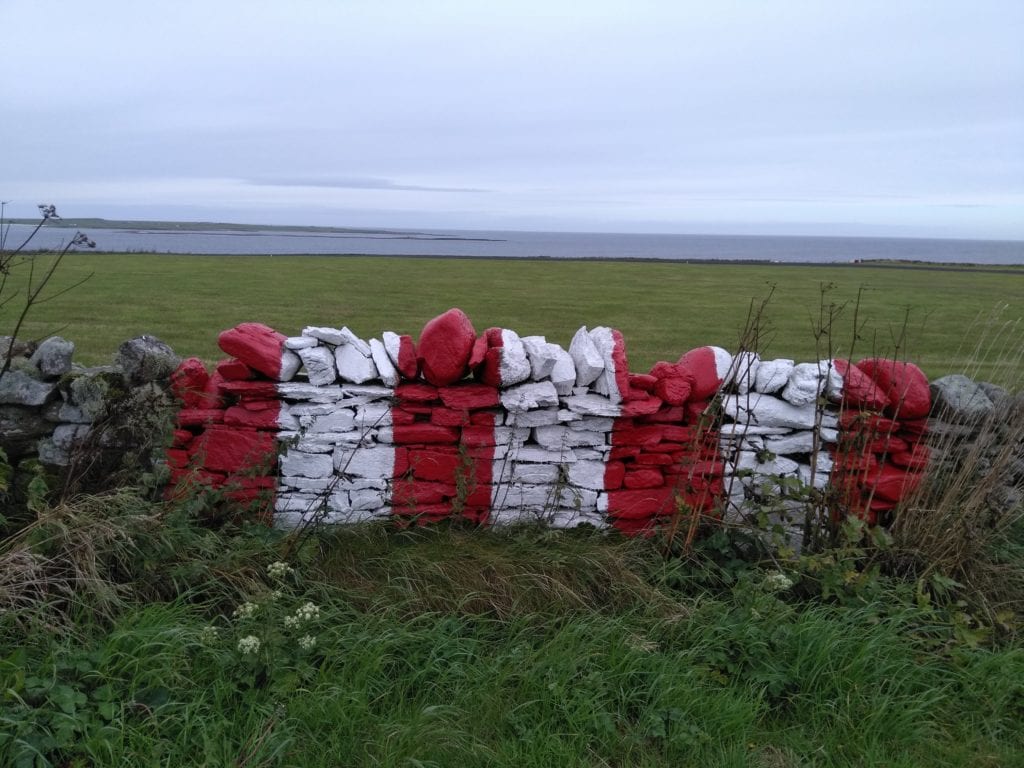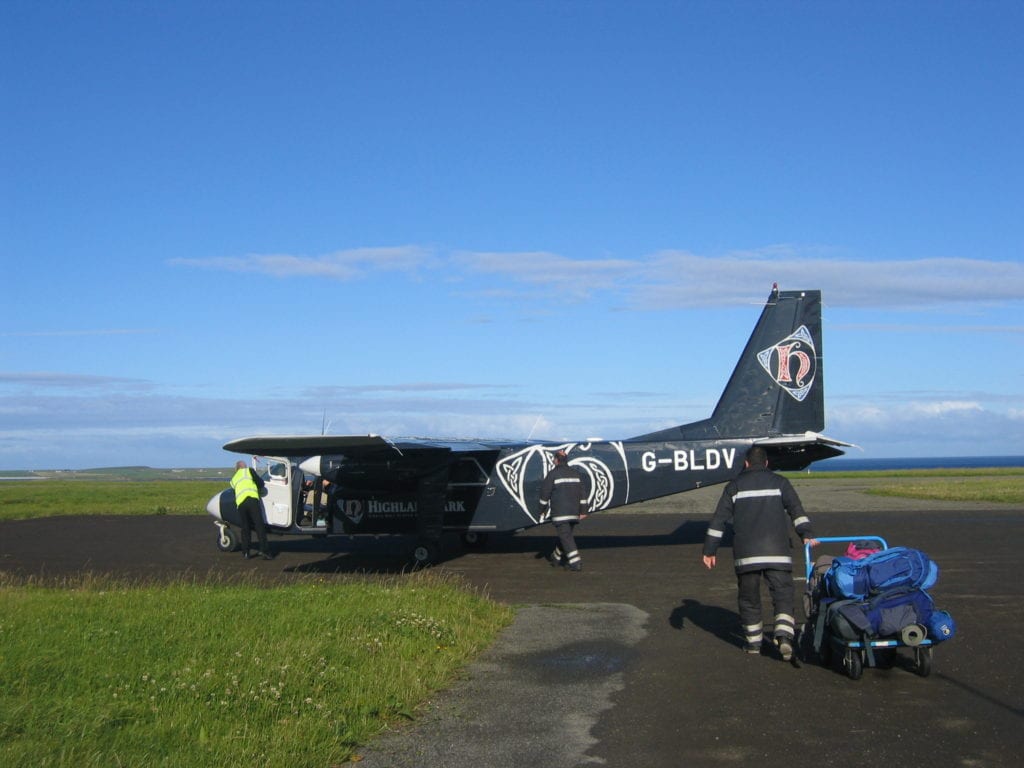We live in a world where you could – at least until lockdown – fly non-stop for 9,000 miles from the UK to Australia in 17 hours. Fortunately for romantics everywhere, you can also fly non-stop for just 1.7 miles and a minute or two in the airspace that separates the airfields of Westray and Papa Westray in Orkney.
Right now, flights are only available to islanders seeking medical attention but, as and when it becomes safe for islanders for us to visit again you will find that, with the right tailwinds, the flight can take less than a minute. ….
‘I’ve read somewhere that the record is 48 seconds but I find that hard to believe,’ says Captain Colin McAllister, who speaks with the authority of someone who has flown the sector 4,000 times. ‘It is more likely to be around 55 seconds. It depends which heading you have as we generally try to take off and land into the wind.’
Either way, the route is embedded in the Guinness Book Of Records as the world’s shortest scheduled flight.
Just a short stroll away…
The distance is shorter than the runway at Heathrow Airport and both taxiing and the safety briefing can take longer than the flight itself. As will your journey to the airfield. Westray’s runway lies two miles north of the island’s only village, Pierowall. A taxi service runs between the two but if you have time, it is worth walking – walking! – to the ‘airport’.
The lane offers fine panoramas across the islands of Orkney and the airfield itself, while your strides will be accompanied by bird song and lowing cows. When you reach it, the terminal resembles a medium-sized suburban garage.

The formalities of check-in are remarkably relaxed and convivial. A fixed routine follows: someone drives along the airfield runway to ensure it is clear of obstructions. The pilot calls the (single!) airport radio controller to confirm he’s (at time of writing they are all male) happy with flying conditions. A third airport employee places your bags in the hold. You are rarely even asked for your name – you can only assume that someone, somewhere, knows that you have a ticket. Then Colin (or one of the other two pilots who ply Orkney’s inter-island routes) sticks his head around the door of the building and enquires: ‘Anyone for Papay?’
Like everything else involved with the flight, the aircraft, an eight-seater Britten Norman Islander, is different to anything you have probably experienced before. George Mackay Brown described the spectacle of these tiny aircraft taking off ‘slowly, like a soft moth in the haze’. You may be asked to mind your head as you duck under the wing to squeeze into your seats. Those at the back are offered headphones to muffle the noise of the engines.
A unique vantage point for picturesque views
The novelty aside – you go up, you go down – the flight is extremely beautiful and offers fine views of both islands as well as the long lines of dunes on the island of Sanday distantly to the south and the ski-jump contours of Fair Isle to the north. Suddenly you are descending, the final approach signified by the red and white painted markers on drystone walls that surround the airfield.

Back on firm land at Kirkwall airport, and having collected my certificate for completing the world’s shortest flight, it becomes clear Colin fully appreciates the uniqueness of his job. ‘Sometimes I have to shake myself and remember that this is quite something,’ he says.
Perhaps the most impressive element of the flight is that it is not a gimmick. In other parts of the world, such a flight might be marketed and branded – and punters charged accordingly. Instead, some of your fellow passengers may also be flying for the unique experience but you may sit next to a doctor or an archaeologist – not that you have much time to strike up a conversation. ‘It’s simply a sector we fly as part of our daily services,’ says Colin. ‘It is not designed for any market other than the locals. It’s just a happy coincidence that it has this special significance.’
Like a demented dragonfly in the wind
The aircraft’s small size means that delays and cancellations do happen, or that things can get bumpy. On one take-off experienced by this author in high crosswinds, the instant that the wheels left the ground the aircraft made a fierce turn to starboard into the wind; it felt like skateboarding. This, explains Colin, is because the Islander’s rudder is not fixed: ‘you can’t lock the rudder the way you can on larger aircraft’.

A similarly impressive spectacle takes place when the Islander lands in strong winds, rather like a demented dragonfly. This may look worrying but Colin is keen to stress the safety aspect: ‘The aircraft can take the weather we fly in,’ he says ‘We can fly to Kirkwall and on instruments but the little islands have nothing other than visual reference. So we have to be able to see them.’ This leads to not infrequent cancellations, or flights that turn back mid-journey. The concern is less hitting terrain and more of hitting telephone wires. ‘We can’t just descend in cloud in the hope we might pop out of it in time,’ Colin points out.
The Westray-Papay route is popular and, once seats have been reserved for islanders, space can be hard to book at short notice. It’s worth bearing in mind that the route is just one of several that Loganair flies around Orkney. The others are not much longer: Kirkwall to Eday and Stronsay are around 10 minutes, Sanday 13 minutes and North Ronaldsay 15 minutes. Book a return ticket on any of these routes and you will be up, down and back in Kirkwall inside the hour.
Yet the short flying time offers another option, that of staying overnight on the outer islands. Little visited by tourists who flock to Skara Brae, they all boast beautiful landscapes, empty beaches, stirring wildlife and good accommodation, from excellent hostels to welcoming B&Bs. And each of the inhabited North Isles has its own chapter in Bradt’s Orkney.
More information
For more information on Papa Westray and the world’s shortest flight, check out Mark’s Orkney guide: